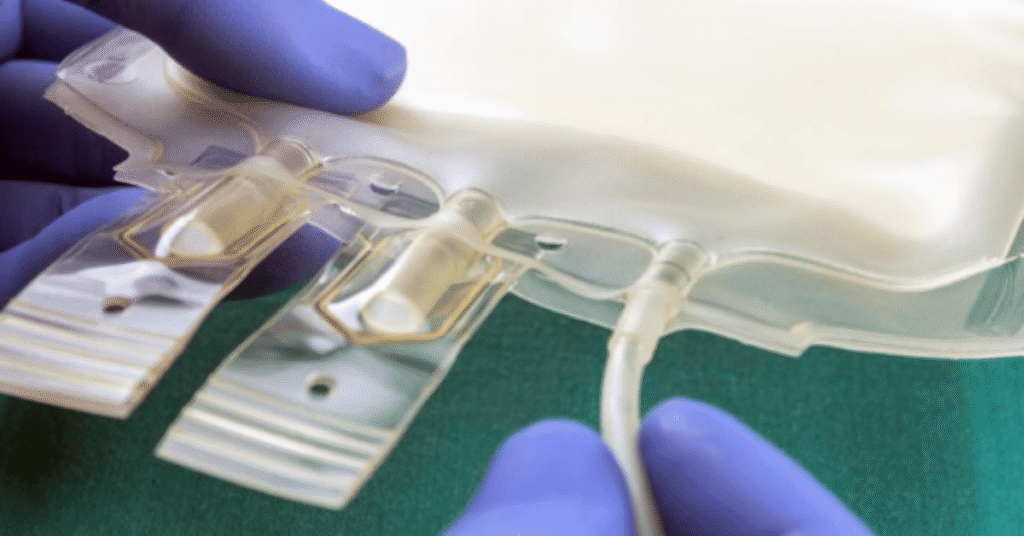In modern medical care, a catheter bag serves as an indispensable tool for individuals who require assistance in urine collection due to medical conditions or mobility limitations. Designed to maintain hygiene, comfort, and dignity, catheter bags have evolved far beyond their early models, integrating features that ensure discretion, safety, and ease of use. The purpose of this article is to explain what a catheter bag is, how it functions, who uses it, and how technology and medical innovation are transforming its role in healthcare. Within the first moments of understanding, the reader should know that a catheter bag is a medical device attached to a urinary catheter that collects urine from the bladder, offering relief and convenience to those unable to urinate naturally.
Catheter bags are critical in both hospital and home-care settings, particularly for patients recovering from surgeries, those suffering from bladder dysfunction, spinal cord injuries, or chronic illnesses that affect urinary control. Today’s designs are not just focused on medical efficiency but also on restoring a sense of normalcy for patients. They come in a range of styles, sizes, and connection systems designed for different needs—from bedside drainage bags used in hospitals to discreet leg bags that allow patients to move freely. As health systems prioritize patient dignity and comfort, catheter bags have become symbols of how technology can compassionately address deeply personal challenges.
Understanding What a Catheter Bag Is
A catheter bag is essentially a urine collection device connected to a catheter inserted into the bladder. The catheter acts as a drainage channel, guiding urine through a sterile tube into the collection bag. Most catheter bags are made from medical-grade plastic materials that prevent leaks and reduce infection risks. These devices are designed for long-term or short-term use depending on a patient’s medical condition. For example, individuals with postoperative urinary retention may use them temporarily, while those with chronic conditions like multiple sclerosis or spinal cord injuries may rely on them permanently. The fundamental purpose of the catheter bag is to maintain continuous urine drainage and minimize patient discomfort while ensuring hygiene standards are met.
Different Types of Catheter Bags
There are mainly two categories of catheter bags—leg bags and bedside bags. Leg bags are portable and attach to the thigh or calf with elastic straps, allowing patients mobility during the day. They are typically smaller in volume, ranging from 500 ml to 1000 ml, making them ideal for discreet daytime use. Bedside bags, on the other hand, have a larger capacity, often up to 2000 ml, designed for use during the night or for patients confined to bed. These bags hang on a stand beside the bed, connected through tubing that ensures continuous flow without backpressure. Specialized variants include anti-reflux bags, which prevent urine from flowing back into the bladder, and pediatric catheter bags designed for children’s needs.
Table 1: Common Types of Catheter Bags and Their Characteristics
| Type of Catheter Bag | Capacity Range | Primary Use | Key Feature | Ideal User |
|---|---|---|---|---|
| Leg Bag | 500 ml – 1000 ml | Daytime mobility | Discreet design | Ambulatory patients |
| Bedside Bag | 1500 ml – 2000 ml | Overnight drainage | Large volume | Bedridden patients |
| Anti-Reflux Bag | 1000 ml – 2000 ml | Prevent backflow | Safety valve | Infection-prone users |
| Pediatric Bag | 100 ml – 500 ml | Childcare use | Smaller size | Pediatric patients |
| Closed System Bag | 1000 ml – 2000 ml | Long-term use | Sterile connection | Chronic care patients |
How Catheter Bags Work
The function of a catheter bag revolves around gravity-based drainage. Once the catheter is inserted into the bladder, urine passes through the tube into the bag. The design ensures there is no backflow, and air vents maintain equal pressure inside the bag. Some bags come with measurement markings that help caregivers monitor urine output—a crucial factor in post-surgical care or chronic illness management. Modern catheter bags include anti-odor barriers, soft materials to prevent skin irritation, and quick-drain valves for hygienic emptying. A one-way valve system is also commonly incorporated to ensure that urine does not re-enter the bladder, minimizing the risk of infection.
Importance of Hygiene and Maintenance
Maintaining hygiene in catheter care is critical. Infections can occur if the bag is not cleaned or replaced regularly. Medical professionals recommend emptying the bag when it is about two-thirds full and disinfecting the connection points before reattachment. For reusable leg bags, cleaning with a mild antiseptic solution and air-drying is essential. Bedside bags, due to their larger volume, are generally replaced every 5–7 days depending on medical advice. Proper hygiene extends to handwashing before and after handling the bag, using sterile gloves when necessary, and ensuring the drainage spout does not touch any surfaces.
When and Why Catheter Bags Are Needed
Catheter bags are prescribed in various medical scenarios. They are commonly used after surgical procedures such as prostate surgery, gynecological operations, or bladder interventions. Patients with urinary incontinence, enlarged prostate, neurological diseases like Parkinson’s, or spinal injuries often depend on catheters for normal function. Temporary catheterization is used in cases of acute urinary retention, while long-term catheterization supports patients with permanent mobility or bladder control issues. The goal is not only to manage urine collection but also to prevent complications such as bladder distention or kidney damage due to urine buildup.
Innovations in Catheter Bag Design
Recent advancements have transformed catheter bags into sophisticated medical devices emphasizing comfort, discretion, and infection control. Many modern bags incorporate antimicrobial coatings that inhibit bacterial growth, while smart catheters can now monitor urine volume and temperature, sending data to healthcare systems for analysis. Some manufacturers have introduced biodegradable catheter bags to address environmental concerns associated with medical waste. Additionally, ergonomic leg straps, soft silicone connections, and noise-free valves have improved user experience significantly. As technology merges with healthcare, “smart catheter bags” represent a promising direction in remote patient monitoring and self-managed care.
Common Issues and Troubleshooting
Despite improvements, patients sometimes face issues such as leaks, odor, or discomfort. Leakage often results from improper connections or overfilling, while odor can indicate infection or infrequent cleaning. Tubing kinks may interrupt drainage, causing discomfort or bladder pressure. To troubleshoot, patients should ensure the tubing remains below bladder level, connections are secure, and the bag is emptied regularly. Persistent problems should always be reviewed by a healthcare provider, as they could signal deeper medical concerns like urinary tract infections or catheter blockages.
Table 2: Troubleshooting Common Catheter Bag Issues
| Problem | Possible Cause | Recommended Action |
|---|---|---|
| Leakage | Loose connection or damaged bag | Reattach or replace bag |
| Foul odor | Poor cleaning or infection | Clean thoroughly, seek medical advice |
| Blocked flow | Kinked tube or sediment buildup | Straighten tube, flush if approved |
| Pain during drainage | Catheter displacement | Consult a doctor immediately |
| Skin irritation | Strap tightness or reaction | Adjust strap or use padding |
Tips for Daily Comfort and Discretion
Living with a catheter bag requires careful adjustment to maintain comfort and confidence. Loose-fitting clothes, proper strap adjustment, and breathable fabrics can make daily use more manageable. Patients using leg bags often benefit from alternating between thighs to prevent pressure marks. Emptying the bag discreetly and maintaining odor control through good hygiene boosts emotional well-being. For those who are socially active, compact bags designed for under-clothing concealment help restore independence and normalcy. A positive mental outlook and routine care make a significant difference in long-term satisfaction and health outcomes.
Safety Considerations and Infection Prevention
One of the biggest concerns for catheter users is infection prevention. Urinary tract infections (UTIs) are among the most common complications. To minimize risks, healthcare providers emphasize sterile insertion, proper bag positioning, and regular replacement. Closed drainage systems—where the catheter and bag are connected in a sealed unit—offer superior infection control compared to open systems. Patients are advised not to disconnect the bag unnecessarily, as this increases bacterial exposure. Additionally, adequate hydration helps flush out bacteria and keeps urine flowing smoothly, preventing blockage or odor.
Role of Healthcare Professionals in Catheter Management
Nurses and caregivers play an essential role in managing catheter bags, particularly for elderly or immobile patients. Their responsibilities include monitoring urine color and volume, ensuring sterile handling, and recognizing early signs of infection. In hospitals, catheter management protocols are standardized to prevent cross-contamination. In home-care settings, training programs teach family members proper handling techniques, including emptying and replacing the bag safely. A patient’s dignity is always a top priority; thus, modern care emphasizes respect, empathy, and education as central components of catheter management.
Psychological and Emotional Dimensions
Using a catheter bag can affect a person’s self-image and emotional state. Feelings of embarrassment or dependency are common, particularly among younger patients. Psychological counseling and community support can help individuals adapt more easily. Healthcare professionals increasingly acknowledge that addressing the emotional impact is just as important as managing physical symptoms. Encouragement from peers and the reassurance that catheter use is a medical necessity rather than a limitation can foster acceptance. As one nurse stated, “The true goal of care is not only to heal the body but to preserve the spirit.”
Environmental and Sustainability Aspects
As healthcare waste becomes a growing global concern, the environmental impact of disposable catheter bags is being addressed through sustainable materials and recycling programs. Some medical manufacturers are now developing biodegradable bags using eco-friendly polymers that decompose safely after use. Reusable bag options, sterilized through medical-grade cleaning systems, are also becoming popular in home-care environments. Sustainability is no longer an afterthought but a guiding principle in the design of modern medical products. This balance between patient safety and environmental responsibility defines the next generation of catheter care.
Advancements in Material Science and Smart Technology
Material innovation has improved not just the comfort but also the functionality of catheter bags. Medical-grade silicone and flexible PVC have replaced older, stiffer materials, minimizing skin friction and leakage risks. Meanwhile, smart monitoring systems can now measure urine volume, flow rate, and temperature in real time. These digital systems alert caregivers through connected apps when bags are full or when abnormal readings are detected. Such integration reflects a broader trend toward digital healthcare, where patient monitoring transcends physical boundaries and fosters preventive care rather than reactive treatment.
Training and Awareness Programs
Education remains a cornerstone in ensuring safe catheter bag usage. Hospitals, rehabilitation centers, and home-care providers increasingly focus on training programs for patients and caregivers. These sessions cover connection methods, cleaning routines, and emergency response measures. Online tutorials and printed guides further reinforce learning. “Empowering patients through knowledge is the best form of preventive medicine,” said one healthcare educator. Such initiatives ensure that users not only manage their devices effectively but also understand when to seek professional help.
The Future of Catheter Bags in Medical Care
The future of catheter technology lies in personalization and digital integration. We may soon see self-draining catheter systems, odor-neutralizing nanomaterials, and fully automated collection systems that connect directly to healthcare databases. As the medical field increasingly focuses on home-based care, the demand for user-friendly catheter systems will continue to grow. These innovations aim not just to make life easier for patients but to redefine how chronic care can be handled with dignity and precision.
Expert Insights on Patient Experience
Experts emphasize that patient comfort must always guide design and policy decisions. Dr. Leila Andersen, a medical device researcher, notes, “A well-designed catheter bag doesn’t just collect fluid—it preserves independence.” This sentiment reflects a broader shift toward empathy-driven innovation in medical technology. As aging populations grow and chronic illnesses become more prevalent, such empathetic engineering ensures that quality of life remains central to healthcare delivery.
Conclusion
Catheter bags represent far more than medical devices; they are essential instruments of dignity, comfort, and health stability for millions worldwide. From hospitals to homes, these tools enable safe urinary management for those who would otherwise face immense discomfort or health risks. Modern designs emphasize hygiene, discretion, and mobility, while technological advancements promise a future of smart, connected, and environmentally responsible solutions. The evolution of the catheter bag is not just a story of medical progress—it is one of compassion and resilience. As healthcare continues to advance, this humble device stands as a reminder that innovation is most powerful when it serves humanity at its most vulnerable moments.
FAQs
1. How often should a catheter bag be changed?
Typically, bedside bags are replaced every 5–7 days, while leg bags can be used longer with proper cleaning and maintenance. Always follow healthcare provider guidance for individual cases.
2. Can catheter bags be reused?
Yes, leg bags are often reusable when cleaned with medical disinfectant and air-dried. However, hospital settings prefer single-use sterile bags to reduce infection risk.
3. What are signs of infection related to catheter use?
Common signs include cloudy urine, foul odor, fever, or pain in the lower abdomen. Immediate medical consultation is advised if these symptoms appear.
4. How should one travel with a catheter bag?
Travelers should carry extra sterile bags, antiseptic wipes, and a discreet leg bag for mobility. Planning ahead ensures comfort and hygiene during long journeys.
5. Is it possible to live a normal life with a catheter bag?
Absolutely. With modern designs, proper care, and emotional adaptation, many individuals lead active, fulfilling lives while managing a catheter bag effectively.







